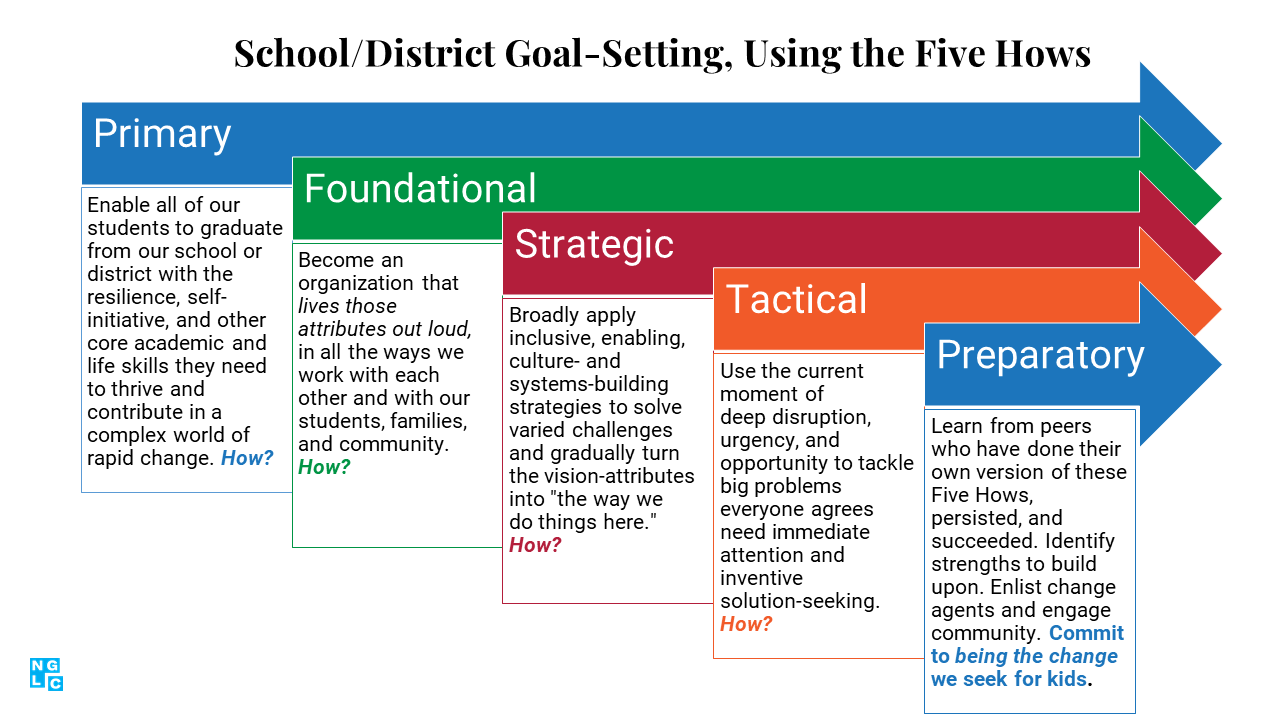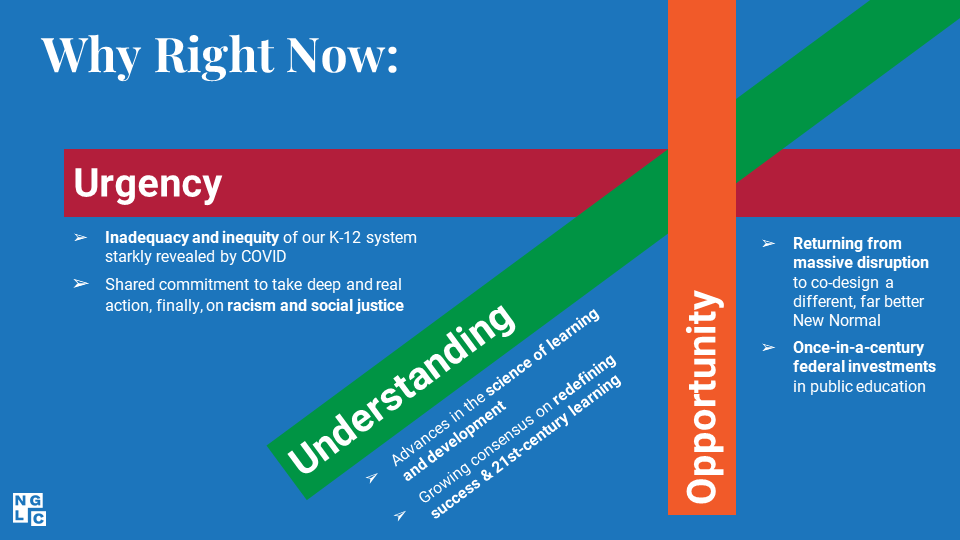
Here's why this project's findings about human-centered organizational coherence are so important. And why now is the time to learn from the participating educators to help your school or district become more resilient, inclusive, and responsive.
COVID has shredded us. Every educator—as well as every student and parent—is exhausted by the pandemic’s relentless shift-shaping. Is this really the right time to be thinking about long-term goals, organizational invigorating, and reimagined student outcomes?
The findings from this research project suggest that it is. Here’s why.
1. We know what works.
A vast array of research across many sectors reveals that highly effective organizations are profoundly mission-driven. Every action and every choice at every level draws on and ultimately advances the mission. (See Jim Collins’s monograph on Good to Great and the Social Sectors for more.)
2. We share a common experience.
Public schools in the U.S. are evaluated on a regrettably thin definition of mission: graduation rates, augmented by test scores. Nearly every public school, CMO, and school district, though, defines its mission more broadly and vividly. And there are educators, students, board members, and parents in these organizations who are working hard to fulfill that mission.
But for most, the mission—the school or district’s aspirational vision of student success—has not become widely operationalized. Their aspirations reflect the goal, but they do not (yet) define the ways the organization does its work.
3. We see that we’ve got to change.
The 70 schools and districts the nine partners studied for this project are among public education’s advance scouts. They are exploring what it looks like to turn aspirations for students and the essential nature of a learning model into an operating manual. We heard the same refrain from virtually every leader we talked to: “If our students are going to develop into high-functioning, problem-solving, self-directed young adults, then our adult staff needs to work within a culture that prizes, and enables, those same attributes.”
It’s common sense. Which doesn’t in any way mean that it is easy to accomplish.
Get Started with the “Five Hows”
 After listening carefully to participating educators throughout 2021, we developed the approach you see below to help school, district, and community leaders spark this conversation within your organization. Many of you may be familiar with the “Five Whys” approach to identifying the root causes of chronic problems. The “Five Whys” are very useful—and, they are super-focused on problems and deficits.
After listening carefully to participating educators throughout 2021, we developed the approach you see below to help school, district, and community leaders spark this conversation within your organization. Many of you may be familiar with the “Five Whys” approach to identifying the root causes of chronic problems. The “Five Whys” are very useful—and, they are super-focused on problems and deficits.
To focus on opportunities, our approach is based on the “Five Hows.” Instead of asking “why is that?” five times to get at root causes, the “Five Hows” serially asks “how might we do that?” to turn a high-level vision into more attainable strategies and steps.

Credit: NGLC
This approach applies what we learned from participating education leaders in the Prepared project, as well as lessons from related research (what NGLC calls Transformation Design), to the context and landscape public schools in the U.S. are facing in 2022.
Walk through the steps of this “Five Hows” approach keeping your own school, CMO, or district in mind. Ask yourself:
- Primary: How does your school or district define your primary goal? Is it sufficient for our times and your aspirations for your graduates? Has your school or district asked, explicitly, how its work directly and specifically advances its mission?
- Foundational: Would the adults who work in your school or district say that its operating culture, processes, and mindsets deeply reflect the aspirations you hold for students? If not: how would the organization go about making that happen?
- Strategic: What is the operating approach that is the organizational equivalent of powerful, engaging, agency-stimulating, collaboration-building, high-expectation project-based learning? If that sounds like a foreign concept, how might you get started, especially given the present climate in schools? (See the Use This Now! page for some ideas.)
- Tactical: During the era of COVID, has your school or district responded (even in part) with some degree of inventiveness and collaborative problem-solving? Do you wonder whether and how that kind of agility might become a hallmark of your organization’s “new normal” as we emerge—eventually—from the pandemic?
- Preparatory: COVID is relentlessly awful—and it’s an opportunity for learning and for change. Is your school or district leveraging that opportunity to learn from peer organizations whose experience seems to offer something quite valuable? (See this project’s research report to get started.)
This set of serial “hows” responds to the urgency and the simultaneous opportunity of this moment. And with increased understanding, developed through studying the 70 Prepared project participants, now communities, schools, and districts can effectively leverage that urgency and opportunity to become truly mission-driven versions of themselves.

Credit: NGLC
Take the Next Step: What We Found
Discover what we learned from our study of 70 student-centered schools and districts across the U.S.
Learn MorePhoto at top by Allison Shelley for EDUimages, CC BY-NC-4.0
